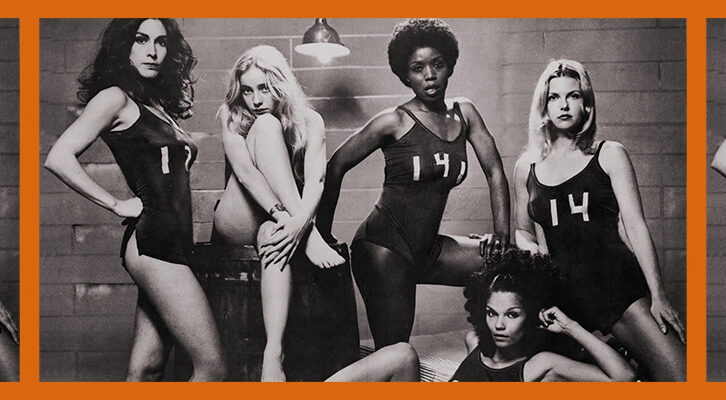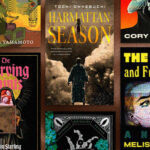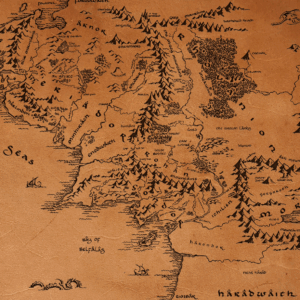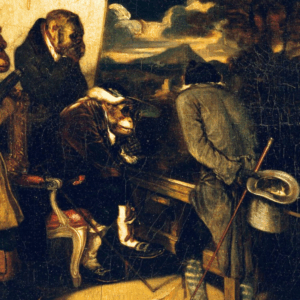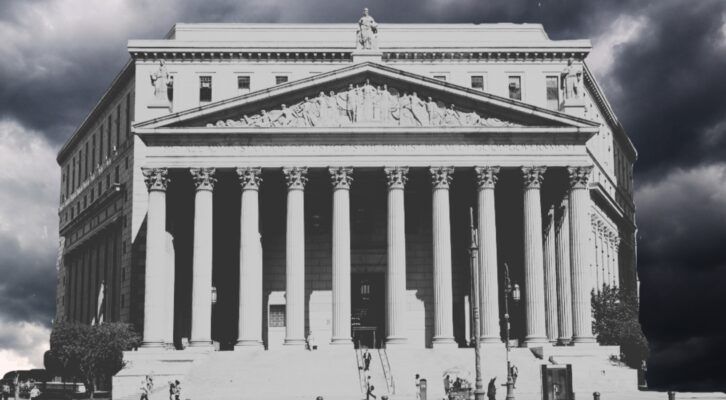
When Telling Your Own Story Gets in the Way of Processing Trauma
Gabriel Urza on Making the Move From Criminal Justice to Creative Writing
When I made my first appointment with my therapist, Silas, I had been working on my novel for three years. I’ve always been a fast writer, and I’d finished my first book in an eighteen-month blur. But despite the fact that I knew—or I thought I knew—the story I wanted to tell in this next book, I had started and scrapped beginnings of this one a half-dozen times, struggling to find a voice, a structure, a point of view.
The book—about a young lawyer thrown into the fire of the American criminal justice system and tasked with representing a client he believes to be innocent—drew heavily on my own experience as a public defender. It was a storyline that I’d lived for five years, loaded with vivid, shocking anecdotes that revealed a dysfunction legal system in practice. Biased cops. Burned-out defense attorneys. Witnesses going sideways on the stand. J
So why was the book so… bad? Why was I struggling so much to tell a story that was, essentially, my own?
In one of our first sessions, Silas explained that he specialized in treating trauma response disorders, including the secondary trauma experienced by professionals—he often treated first responders and soldiers, doctors and lawyers. My work as a criminal defense attorney had been overwhelming at times—I’d worked with violent offenders and accused sexual predators, with arsonists and child abusers. It had been my job to review autopsy and murder scene photographs and sexual assault reports, and over the years I’d become inured to their psychic power. Like many of the attorneys I worked with, I was able to compartmentalize, to get together for drinks at the end of the week or after a trial to trade war stories and then return to the “regular world.”
But what I was suffering from wasn’t PTSD, I told Silas. It was writer’s block.
But what I was suffering from wasn’t PTSD, I told Silas. It was writer’s block. As proof of my mastery of emotional compartmentalization, I brought up a story I’d often told—a worst-case scenario that involved the death of a child.
“Hold on for a second,” Silas said halfway through the story, at the moment when I see the child alive for the last time.
“It’s OK,” I told him. I was used to people balking at this story, and I was eager to show that I’d made peace with it. “I’ve told this story a hundred times.”
“Gabe, stop talking,” Silas said. It wasn’t an offramp being offered. It was a command. “I don’t know what you think you’re doing, but you’re not processing anything right now.”
I stopped my story, a bit dumbfounded. I’d processed the experience a hundred times, hadn’t I? I’d been sure I was processing it each time I told it.
I’ve always taken for granted that retelling traumatic stories like this one is good for us. Don’t keep it all bottled up, we’re told. It’s important to get it out in the open. It’s exactly why my defense attorney friends would gather at the bar to laugh about our war stories of the week. And it’s why, in part, I’d wanted to write this book in the first place.
But the longer I met with Silas, the more I grew suspicious of this idea. Silas seemed to be steering me away from the stories, from the most painful or shameful memories, until I was in a place where I could disentangle them from the emotional heat they carried. Simply going back to the scene of the crime, he seemed to be suggesting, wasn’t helpful to me yet.
Simply going back to the scene of the crime, he seemed to be suggesting, wasn’t helpful to me yet.
The assumed therapeutic value of writing has become such a trope in recent decades that “trauma fiction” and “the trauma memoir” have become their own genres. A friend of mine, Todd Schultz, is a writer and psychologist who specializes in what he calls “psycho-biographies,” books about artists with self-destructive streaks like the musician Elliot Smith or the photographer Diane Arbus. Years ago, I asked Todd about the transformative, therapeutic power of art as he saw it in his subjects.
“I don’t think it really works that way,” he said. We talked about artists like Elliot Smith and Kurt Cobain, who had seemed to make their careers by mining traumatic experiences in their lives, but who had ultimately died by suicide. So what are these artists doing in their work, I asked, if not performing some sort of public therapy, even if it hadn’t been enough to save them?
Todd shrugged.
“I think it’s something more like a compulsive reenactment of their past trauma,” he said flatly.
His response had confounded me at the time. But now, in Silas’ office, it begins to make sense.
A few years ago my law partner, Theresa, asked if I was available to help her with a new case. I’d resigned from the public defender’s office eight years earlier—these days, my paycheck comes from teaching Creative Writing to undergrads and grad students, which gives me time and space for writing. But I’d second-chaired for Theresa before when she has a particularly complicated case or difficult client.
This would be our fourth murder case together—a middle aged man with no criminal history accused of bludgeoning an acquaintance to death—and I reflexively said yes. I enjoyed working on these cases with her, even though they caused a lot of stress. I’ve thought often about why I come back to these cases with Theresa, which take up large chunks of time. The obvious answer is that I like the work of being a defense attorney—the storytelling process of it, the constraints that evidence and testimony put on a theory of defense. I like reading the witness statements, looking through crime scene photos, touching the murder weapons or bloody clothes at the county evidence locker. The stakes and intellectual challenge of this type of storytelling couldn’t be higher.
There’s something else that draws me back to the work. Unresolved business, maybe.
There’s something else that draws me back to the work. Unresolved business, maybe. The chance to focus on a single case, to do the job I’d wished I’d had time and resources for as a public defender. But also, I wonder now, is there an element of compulsive reenactment here, as well?
I’ve come to think of these first efforts at writing my public defender novel as the “lion tamer” method of writing. As a kid growing up in Reno, a friend’s parents once took me to a visiting circus. One of the main attractions was the “big cats” show, in which a lion tamer coaxes lions and tigers to perform tricks that a common housecat might be trained to do: to jump from box to box, to stand on their hind legs, to chase a ball.
The climax of a big cat show is often a dramatic moment in which the tamer places his head inside the open mouth of a lion; the audience watches in dread—or hope—that the big cat will, in a capricious moment, decide to simply bite down and end the tamer’s life (which occasionally happens).
An anecdote might be thrilling the first time around, but the more we repeat it the more boring it becomes. The stakes are the same, but the drama is diminished.
Isn’t this part of the appeal of writing our own trauma? That there are inherent stakes in simply revisiting our most painful, or shameful, moments? In sticking my head into the lion’s mouth by recounting that horror story about the dead child for the thrill of the reader?
But the thing about the lion tamer’s show is that they are rarely interesting the second time around. We’ve seen this before, we know the lion tamer has accepted the risk. The act has become an anecdote, rather than a story. An anecdote might be thrilling the first time around, but the more we repeat it the more boring it becomes. The stakes are the same, but the drama is diminished.
I kept going to my appointments with Silas. We began what I would describe as a process not of confronting the pain and guilt of my work as a public defender, but of contextualizing it. Of creating a story around it.
Silas used EMDR, a technique that—as I understand it—grounds patients in their physical, sensory bodies while revisiting past traumatic events. The point is to allow us to observe these events without re-experiencing them. Occasionally, I would be handed two buzzers, which vibrated with a regular cadence in alternating hands, while we discussed my previous job and the guilt I often associated with it. The everyday violence and misery of the cases themselves, but also the unmanageable caseloads, the terror of being a twenty-five year old new attorney responsible for the lives of our clients.
As I continued my appointments with Silas, I found my book beginning to change.
With my eyes closed, Silas would guide me through a process of assigning these painful memories to objects, objects that I would imagine zipping up into a bag that was kept in a safe place. It’s a technique that I was initially resistant to, but that I found to be incredibly useful as we discussed my work as a public defender. Eventually, I even returned to my “worst case scenario” story, the one I’d attempted to tell Silas during that first visit before he cut me off. I assigned the memory to an object—a manila envelope—and zipped it away in my imaginary bag, safe from harm.
As I continued my appointments with Silas, I found my book beginning to change. The anecdotes and war stories that had infected my early drafts began to disappear from the manuscript. Pages came more quickly, and the arc of the novel changed. The characters—even the young narrator—became their own characters, with their own histories and volitions.
As I did so, I found myself coming to a sort of peace with my failings as a public defender. I was still resistant to the idea that I had PTSD, but terms like “secondary trauma” and “moral injury” began to capture the sense of survivor’s guilt I felt. By seeing my characters—characters who were not me or people I knew—operate in the same job, under similar circumstances, I came to understand the impossibilities of being a moral, rational actor in an amoral, irrational criminal justice system.
Now, when I talk about the book and about my time as a defense attorney, I feel less like the lion tamer and more like a stage magician, turning a handkerchief into a dove.
__________________________________
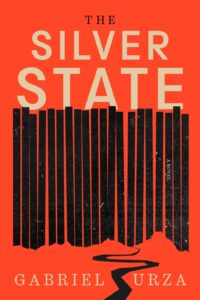
The Silver State by Gabriel Urza is available from Algonquin Books, an imprint of Hachette.
Gabriel Urza
Gabriel Urza is a writer, attorney, and university professor from Reno, Nevada. He teaches Fiction in the MFA program at Portland State University and lives in Hood River, Oregon.











